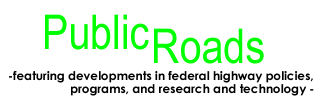
 |
||
|
Editor's Notes
Finally, A Highway Bill
On June 9, there was a great collective sigh of relief from virtually everyone in the public and private sectors of the "highway community." Finally, the Transportation Equity Act for the 21st Century (TEA-21), which was passed by Congress on May 22, was law, and we had legislation to replace the Intermodal Surface Transportation Efficiency Act of 1991 (ISTEA), which expired on Sept. 30, 1997. TEA-21 authorizes highway, highway safety, transit, and other surface transportation programs for the next six years. The act builds on the initiatives of ISTEA, continuing and improving current programs, and establishes some new initiatives to meet the challenges of improving safety, dealing with ever-increasing traffic, protecting and enhancing communities and the natural environment, and advancing the nation's economic growth and commercial competitiveness. President Clinton and Transportation Secretary Slater used words such as "landmark legislation" and "historic legislation" to tout TEA-21. Clearly, the reaction from most of the community to the act, which guarantees a record $198 billion in highway and transit funding, ranges from pleased to ecstatic; however, inevitably, not everyone is happy with the bill. Some intensive analysis of the provisions of the act and their effects is underway, and in the next issue of Public Roads, we'll have an article about TEA-21. According to the Department of Transportation (DOT), the significant features of TEA-21 include:
TEA-21 provides $217.3 billion in surface transportation investment over six years, and it guarantees $198 billion in funding. It provides $28.6 billion for the National Highway System, $23.8 billion for interstate maintenance, $33.3 billion for the Surface Transportation Program, $20.4 billion for bridge replacement and rehabilitation, $8.12 billion for the Congestion Mitigation and Air Quality Improvement Program, and $42 billion for transit. Thanks to TEA-21, Public Roads will have a wealth of information to share with you about interesting and important advancements in highway programs and technology — advancements that, as Secretary Slater said, will provide Americans with "the opportunity to lead safer, healthier, and more fulfilling lives." Bob Bryant
Articles & Departments
|
|
|
TFHRC Home | FHWA
Home | Feedback
United States Department of Transportation - Federal Highway Administration |